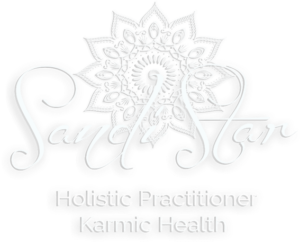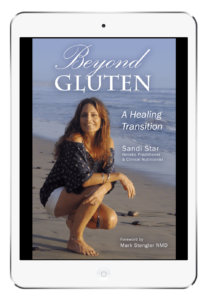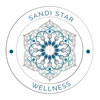Template


Download a free chapter of my book
Beyond Gluten a Healing Transition
Download a free chapter of my book Beyond Gluten a Healing Transition
A
{Place Content Here}
B
{Place Content Here}
C
{Place Content Here}
D
{Place Content Here}
Environmental Toxins
Have you ever gone for a walk and wonder what toxins you are exposed to?
The following toxins are among the most prevalent in our air, water and/or food supply. This list is not all-inclusive, as thousands of other toxins are also circulating in our environment.
1. PCBs (polychlorinated biphenyls): This industrial chemical has been banned in the United States for decades, yet is a persistent organic pollutant that’s still present in our environment.
Risks: Cancer, impaired fetal brain development.
Major Source: Farm-raised salmon. Most farm-raised salmon, which accounts for most of the supply in the United States, are fed meals of ground-up fish that have absorbed PCBs in the environment. Make sure you are buying Wild Caught.
2. Pesticides: According to the Environmental Protection Agency (EPA), 60% of herbicides, 90% of fungicides and 30% of insecticides are known to be carcinogenic. Pesticide residues have been detected in 50% to 95% of U.S. foods. That’s why it’s important to buy organic or from a trusted local farmer.
Risks: Cancer, Parkinson’s disease, miscarriage, nerve damage, birth defects, blocking the absorption of food nutrients.
Major Sources: Food (fruits, vegetables and commercially raised meats), bug sprays.
3. Mold and other Fungal Toxins: One in three people have had an allergic reaction to mold. Mycotoxins (fungal toxins) can cause a range of health problems with exposure to only a small amount including but not limited to candida and respiratory complications.
Risks: Cancer, heart disease, asthma, multiple sclerosis, diabetes.
Major Sources: Contaminated buildings, food like peanuts, wheat, corn and alcoholic beverages.
4. Phthalates: These chemicals are used to lengthen the life of fragrances and soften plastics.
Risks: Endocrine system damage (phthalates chemically mimic hormones and are particularly dangerous to children).
Major Sources: Plastic wrap, plastic bottles, plastic food storage containers. All of these can leach phthalates into our food. Use glass bottles and glass storage containers wherever possible.
5. VOCs (Volatile Organic Compounds): VOCs are a major contributing factor to ozone, an air pollutant. According to the EPA, VOCs tend to be even higher (two to five times) in indoor air than outdoor air, likely because they are present in so many household products.
Risks: Cancer, eye and respiratory tract irritation, headaches, dizziness, visual disorders, and memory impairment.
Major Sources: Drinking water, carpet, paints, deodorants, cleaning fluids, varnishes, cosmetics, dry cleaned clothing, moth repellants, air fresheners. This one is tough to avoid but not impossible.
6. Dioxins: Chemical compounds formed as a result of combustion processes such as commercial or municipal waste incineration and from burning fuels (like wood, coal or oil).
Risks: Cancer, reproductive and developmental disorders, chloracne (a severe skin disease with acne-like lesions), skin rashes, skin discoloration, excessive body hair, mild liver damage.
Major Sources: Animal fats: Over 95% of exposure comes from eating commercial animal fats. Another reason to buy organic and eat grass fed beef.
7. Asbestos: This insulating material was widely used from the 1950s to 1970s. Problems arise when the material becomes old and crumbly, releasing fibers into the air.
Risks: Cancer, scarring of the lung tissue, mesothelioma (a rare form of cancer).
Major Sources: Insulation on floors, ceilings, water pipes and heating ducts from the 1950s to 1970s.
8. Heavy Metals: Metals like arsenic, mercury, lead, aluminum and cadmium, which are prevalent in many areas of our environment, can accumulate in soft tissues of the body.
Risks: Cancer, neurological disorders, Alzheimer’s disease, foggy head, fatigue, nausea and vomiting, decreased production of red and white blood cells, abnormal heart rhythm, damage to blood vessels.
Major Sources: Drinking water, fish, vaccines, pesticides, preserved wood, antiperspirant, building materials, dental amalgams, chlorine plants. Hair analysis is a good way to test for heavy metals.
9. Chloroform: This colorless liquid has a pleasant, nonirritating odor and a slightly sweet taste, and is used to make other chemicals. It’s also formed when chlorine is added to water.
Risks: Cancer, potential reproductive damage, birth defects, dizziness, fatigue, headache, liver and kidney damage.
Major Sources: Air, drinking water and food can contain chloroform.
10. Chlorine: This highly toxic, yellow-green gas is one of the most heavily used chemical agents.
Risks: Sore throat, coughing, eye and skin irritation, rapid breathing, narrowing of the bronchi, wheezing, blue coloring of the skin, accumulation of fluid in the lungs, pain in the lung region, severe eye and skin burns, lung collapse, reactive airways dysfunction syndrome (RADS) (a type of asthma).
Major Sources: Household cleaners, drinking water (in small amounts), air when living near an industry (such as a paper plant) that uses chlorine in industrial processes. Pools use chlorine which is a good reason to switch to salt water pools.
HOW TO AVOID THEM
It’s impossible to avoid all environmental toxins so keep your immune system strong with optimal nutrition and limit your exposure to environmental toxins as much as possible with the following tips:
– Buy organic as much as possible, organic produce, meats, fish (wild caught), eggs. Grass fed beef is organic.
– If you’re not eating fish consume a high-quality purified fish or cod liver oil. If you do consume fish eat only a smaller size fish because the smaller fish tend to accumulate less of the poison. Download a PDF reference list.
– Avoid processed foods — remember that they’re processed with chemicals. Think “whole food”.
– Only use natural cleaning products in your home. Great link to non-toxic solutions:
– Switch over to natural brands of toiletries, including shampoo, toothpaste, antiperspirants and cosmetics. Great link to clean organic products
– Remove any metal fillings as they’re a major source of mercury. Be sure to have this done by a qualified biological dentist.
– Avoid using artificial air fresheners, dryer sheets, fabric softeners or other synthetic fragrances as they can pollute the air you are breathing.
– Avoid artificial food additives of all kind, including artificial sweeteners and MSG.
– Get plenty of safe sun exposure to boost your vitamin D levels and your immune system (you’ll be better able to fight disease).
– Have your tap water tested and, if contaminants are found, install an appropriate water filter on all your faucets (even those in your shower or bath).
Source: Mercola.com
F
{Place Content Here}
G
{Place Content Here}
H
{Place Content Here}
I
{Place Content Here}
J
{Place Content Here}
K
{Place Content Here}
L
{Place Content Here}
M
{Place Content Here}
N
{Place Content Here}
O
{Place Content Here}
P
{Place Content Here}
Q
{Place Content Here}
R
{Place Content Here}
S
{Place Content Here}
T
{Place Content Here}
U
{Place Content Here}
V
{Place Content Here}
W
{Place Content Here}
X
{Place Content Here}
Y
{Place Content Here}
Z
{Place Content Here}
{Place Call to Action Here}
please contact or call 760.685.3145
DISCLAIMER: Any medical information on this site is provided as an information resource only, and is not to be used or relied on for any diagnostic or treatment purposes. This information is not intended to be patient education, does not create any patient-physician relationship, and should not be used as a substitute for professional diagnosis and treatment. Please consult your healthcare provider, or contact Karmic Health for an appointment, before making any healthcare decisions or for guidance about a specific medical condition. Karmic Health expressly disclaims responsibility, and shall have no liability, for any damages, loss, injury, or liability whatsoever suffered as a result of your reliance on the information contained in this site or through our programs. Karmic Health does not endorse specifically any test, treatment, or procedure mentioned on the site. By visiting this site, you agree to the foregoing terms and conditions, which may from time to time be changed or supplemented by Karmic Health. If you do not agree to the foregoing terms and conditions, you should not enter this site.

